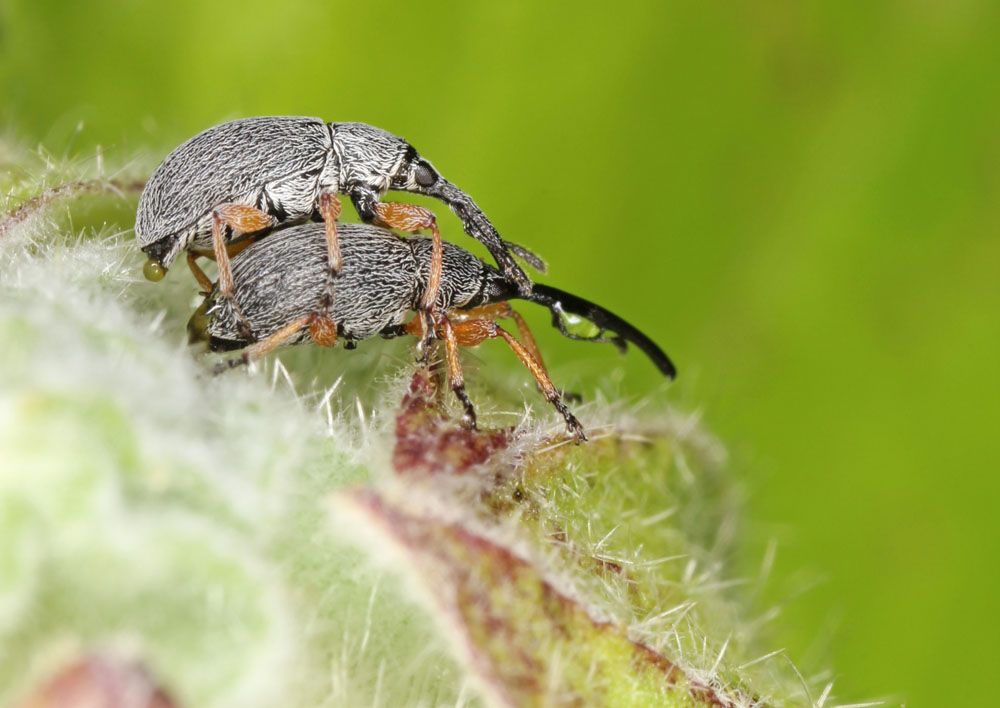
Hollyhock Weevil – Apion longirostre
Hollyhock Weevil: Appearance, Territory, Damage and Life Cycle
Latin Name: Apion longirostre
Appearance: Hollyhock weevils (Apion longirostre) are gray snout beetles with orange legs that are 1/8 to 1/4 inch (3-6 mm) in length, including their noticeable proboscis, which is substantially longer in females than males. Adult hollyhock weevils overwinter in the soil of afflicted hollyhock beds before emerging in the spring to feed and deposit their eggs. The female chews a tiny hole in a flower bud before placing a single egg, a process she repeats several times. The hollyhock weevil egg does not interfere with flower production, but instead becomes encased within the developing hollyhock seed pod. From late summer to early fall, the larvae eat and pupate here before emerging as adults and dropping into the earth. In most areas, hollyhock weevils have just one generation each year.
Hosts Plants: The hollyhock weevil appears to be the only host of the hollyhock weevil. Hollyhock weevils’ prey on foliage buds before flower buds’ form.
Territory: A. Longirostre’ s natural range is in Eurasia, previously restricted to southern and southeastern Europe and Asia Minor. It has subsequently spread far further afield in that country. It was discovered in North America for the first time in 1914, in Georgia. It had swept over the continent in fifty years.
Damage Insect Cause: Adults eat on leaves, which causes little holes in the tissue. The large nose allows it to feast on seeds and buds. Look for somewhat holy leaves and the paired weevils near blossoms and buds. Weevils diminish flower output and may interfere with natural reseeding in the garden. Weevil feeding damage to hollyhock is minimal. Weevil pests on hollyhocks inflict relatively minimal aesthetic harm by nibbling tiny holes in the foliage and petals of the plant. However, they can seriously shorten the longevity of hollyhock stands. Hollyhock weevil larvae may drastically interrupt the life cycle of your hollyhock bed since these plants are short-lived perennials at best and may take two years to develop blossoms.
Life History and Habits: In July and August, mature weevils’ mate. The female drills a deep hole into the growing bud and deposits her eggs. Larvae mature in 4 to 6 weeks. They pupate in August and spend the winter, primarily as adults, among the duff and litter.
